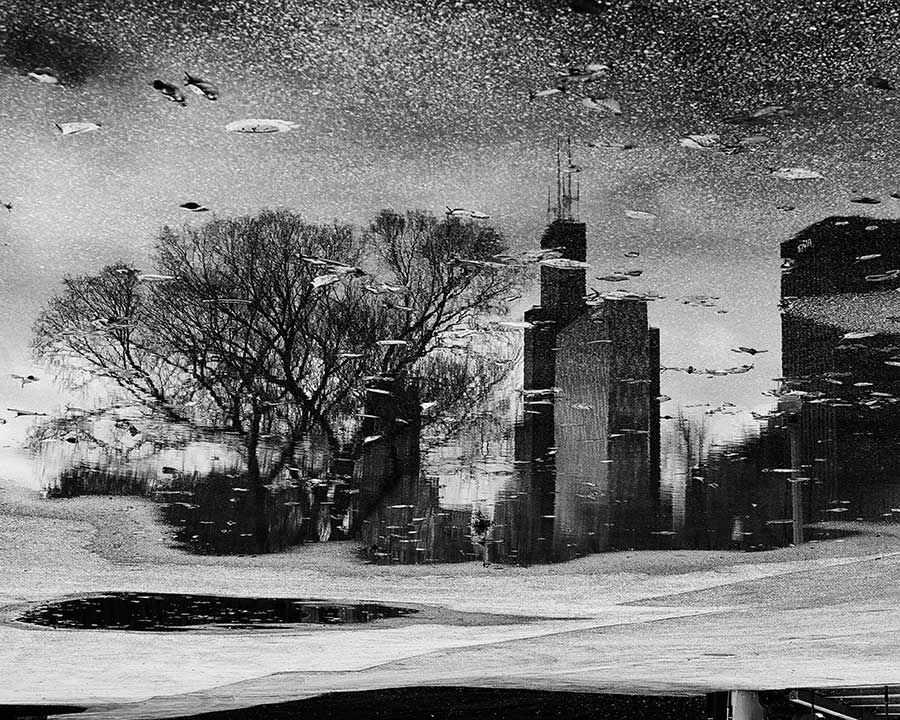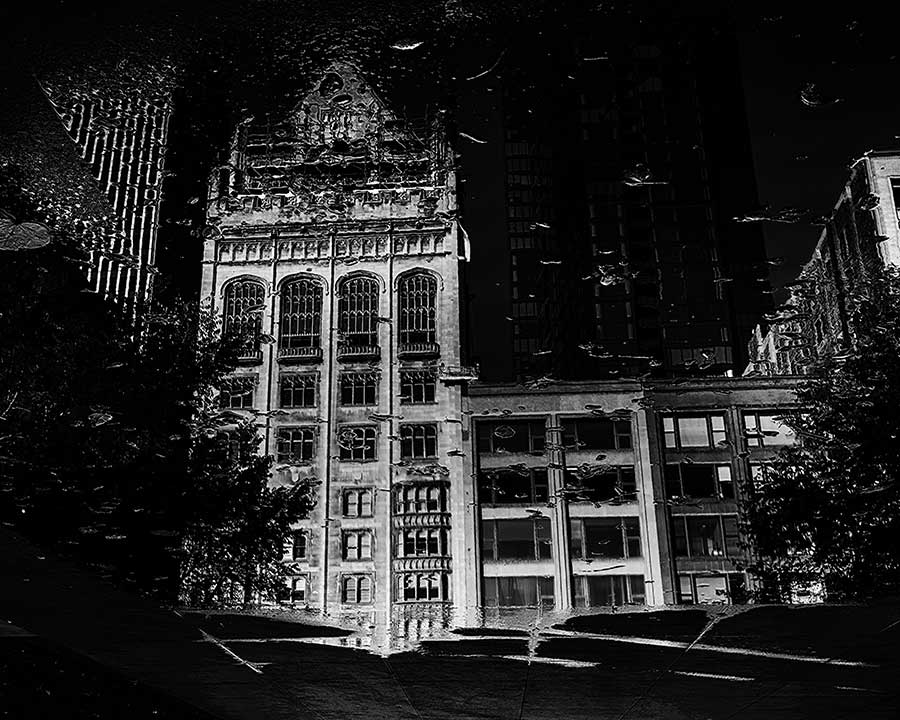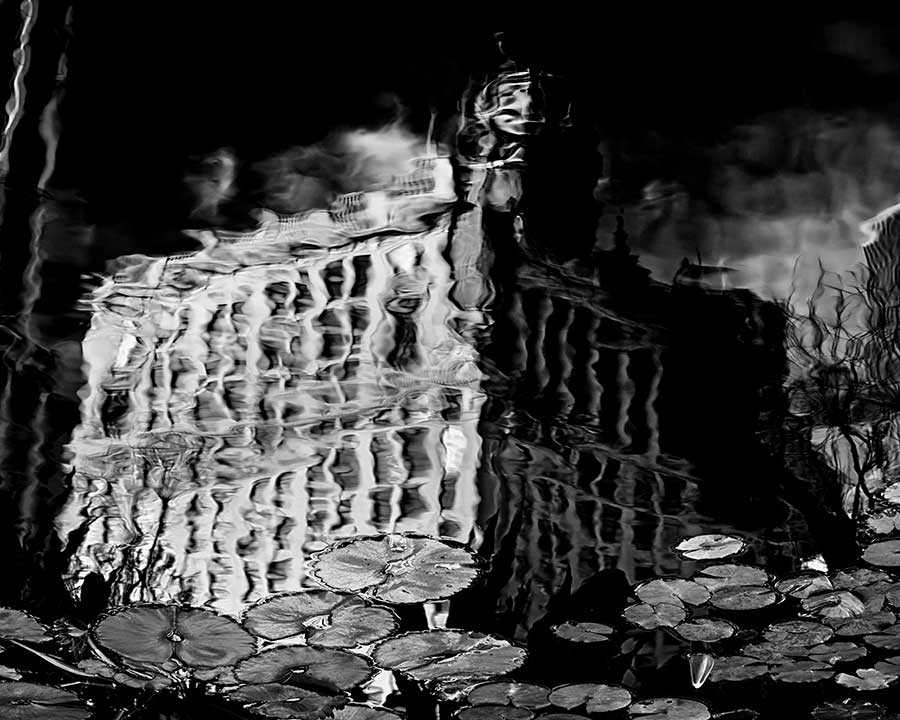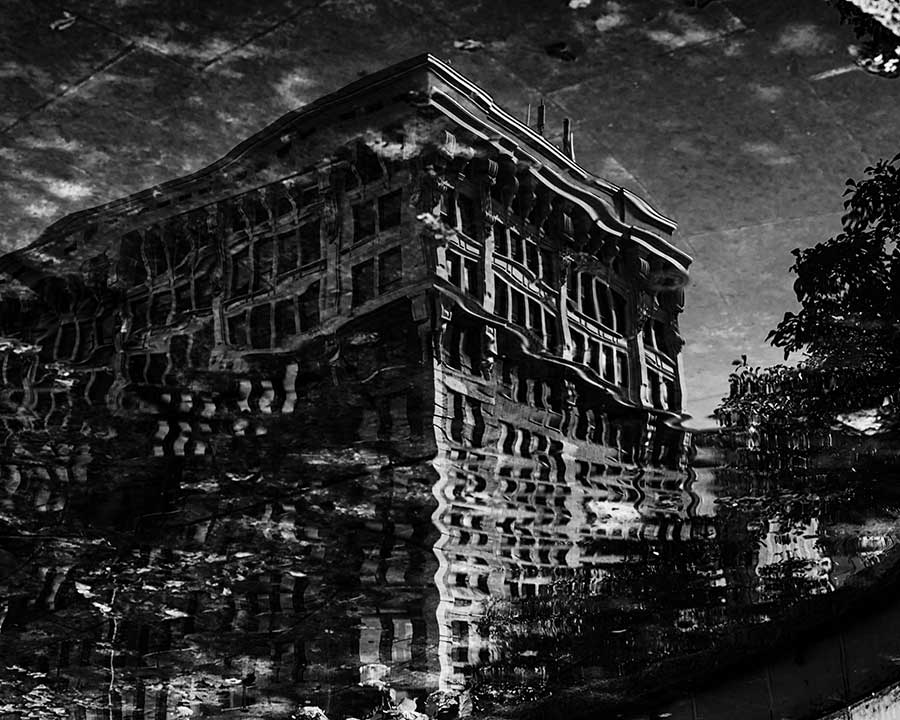Steve Geer – In Lewis Carol’s Through the Looking Glass, Alice finds a world that is familiar, and yet not quite right. After reading a poem in the looking-glass world, she notes: `Somehow it seems to fill my head with ideas – only I don’t exactly know what they are!’ Lewis Carol was pointing out that seeing something we don’t quite understand gets us thinking.
In early 2014 I began to photograph Chicago cityscapes reflected in various shiny surfaces. This led me to think of Lewis Carol’s famous book, and inspired me to reread his wonderful text. Alice’s through the looking glass world is a world of imagination that is filled with those naïve but deep insights that children sometimes have. I thought it would be great to photographically explore my local city, Chicago, using Lewis Carol’s trick of viewing the world through a looking glass. To do this, in Chicago through the Looking Glass, I show the city’s famous architecture reflected in various horizontal surfaces: full and empty pools, puddles, and fountains. The images are flipped vertically, transporting them into the looking glass world. This is a magical world in which down-to-earth things – the pavement, fallen leaves, items of litter – become objects of fantasy floating mysteriously in space. It is a place with a dark and gritty heaven made of pavement textures and tones. If there is a slight breeze, disturbed standing water distorts the reflected images in pools and puddles to produce dreamlike scenes. The looking glass world is a place that looks almost real, and yet is not quite right. It is something we don’t fully understand, which gets us thinking.
Chicago is a highly engineered North American metropolis. Built in a swamp, nineteenth century Chicago engineers raised entire city streets ten feet to get the city out of the mud. Some of the shops and hotels were still occupied, and doing business, as they were inched upwards. A decade or so later, to go even higher, the engineers developed skyscraper technology. In the twentieth century they went even further and straightened Chicago’s famous River, and then reversed its flow so that the city’s sewage would be sent not to the source of the city’s drinking water, Lake Michigan, but downstate and into the Mississippi River. Thus, the real Chicago is an almost impossible place, a place where its engineers have conquered the ground and reached for the sky. This is the spirit of the city, and to capture it, in the Chicago through the Looking Glass project, I chose not to point my camera upwards at the city’s greatest achievements, the skyscrapers, but downwards at the ground under foot, its greatest conquest.
When you enter the looking glass world you cannot escape its logic. Left and right are, of course, swapped, as they are in any mirror. But there are other things that are also muddled. If we look down at a puddle, we perceive the sky in the ground and the ground in the sky. What we are actually seeing is both sky and ground simultaneously, both up and down superimposed. If we look harder, we will see in the looking glass world things that we might overlook in the real world, the urban ephemera – leaves and litter. Since they are floating, and not where they are meant to be, we notice them. The ephemera tell us that the looking glass world is not a sterile place. Within it there is life – plants and people. Strange though these flipped images may seem, apart from minor corrections, no other manipulations have been made in the digital darkroom. Nothing has been added or subtracted. These are documentary images taken within a single square mile of downtown Chicago. The looking glass world is presented as found. [Official website]






















